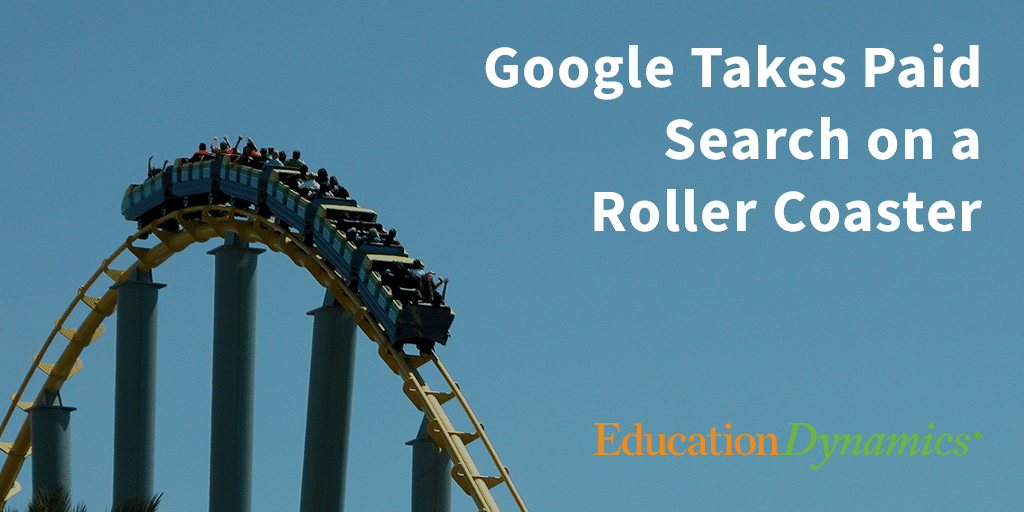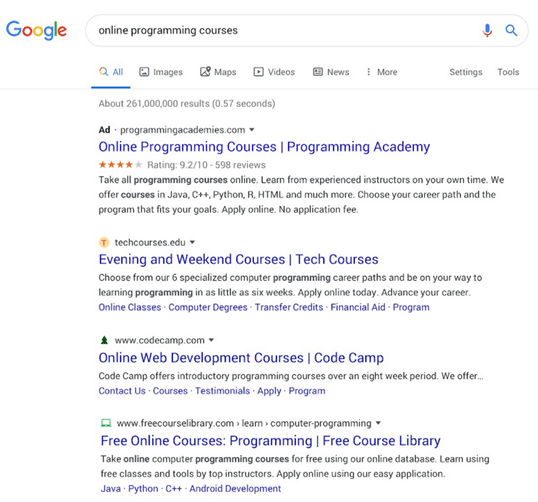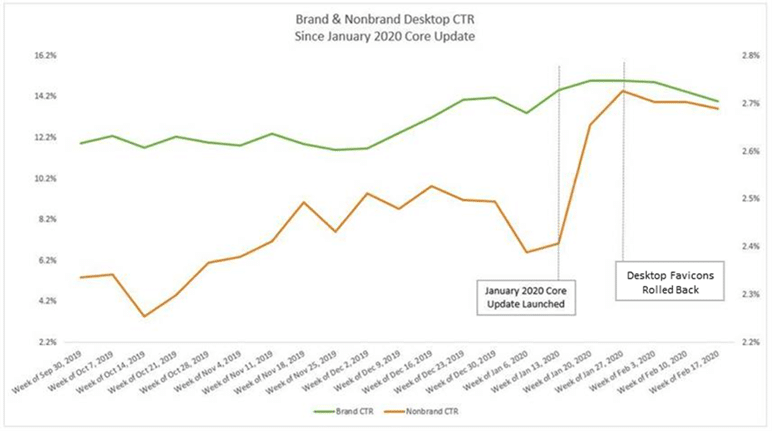Google Takes Us on a Paid Search Roller Coaster with Recent Core Update

Several weeks ago, Google rolled out an algorithm update dubbed the “January 2020 Core Update.” This update drove some volatility within organic rankings, rich snippets, and more across a wide range of industries; the metaphorical dust has settled a bit over the past several weeks, and marketers are seeing more stabilization in organic results and adjusting to their new SEO reality.
One aspect of the update, however, has been left a bit more open-ended and has direct impacts on paid search as well as organic results. As part of the update, Google initially revised the look and feel of their organic SERPs to include a favicon on desktop listings. This move drew some immediate criticism and numerous complaints from the industry, as there was concern that this move made it more difficult for users to differentiate between organic listings and paid ads which carry an “Ad” icon.

This criticism came despite the fact that this ad marker/favicon setup mirrored how the mobile SERPs have been displayed since May 2019, which caused similar rumblings at the time but has become accepted in the subsequent months.
With this most recent visual change to desktop SERPs, there was speculation that paid search advertisers would benefit from increased CTRs on desktop as ads may blend in more seamlessly with organic listings. At EducationDynamics, our results supported this theory as we did see an aggregate jump in both brand and (more aggressively) nonbrand CTRs within paid search immediately following the core update rollout. This jump appeared to be more than the typical post-holidays recovery, with results suggesting that the favicon update did, at least in part, push a higher CTR and increased engagement on paid ads vs. organic listings, especially for nonbrand keywords.

Just two weeks after the initial rollout, however, Google announced that they would be rolling back the favicon update on desktop based on user/industry feedback, stating that they will be “experimenting with new placements for favicons” and setting expectations that these will appear differently to different users over the coming weeks as they perform their testing.
Following that rollback, our clients have seen a slight decline in paid search desktop CTR, but overall performance has remained relatively sustained thanks to strong Q1 seasonality for the education industry. As Google continues to test how SERPs appear, we may continue to see fluctuations in CTR results.
This roller coaster has further proven that in the modern digital marketing landscape, paid and organic execution should complement each other and work together within a cohesive SEM strategy. To learn more about how EducationDynamics aligns our Marketing Services to ensure the best results for our clients.